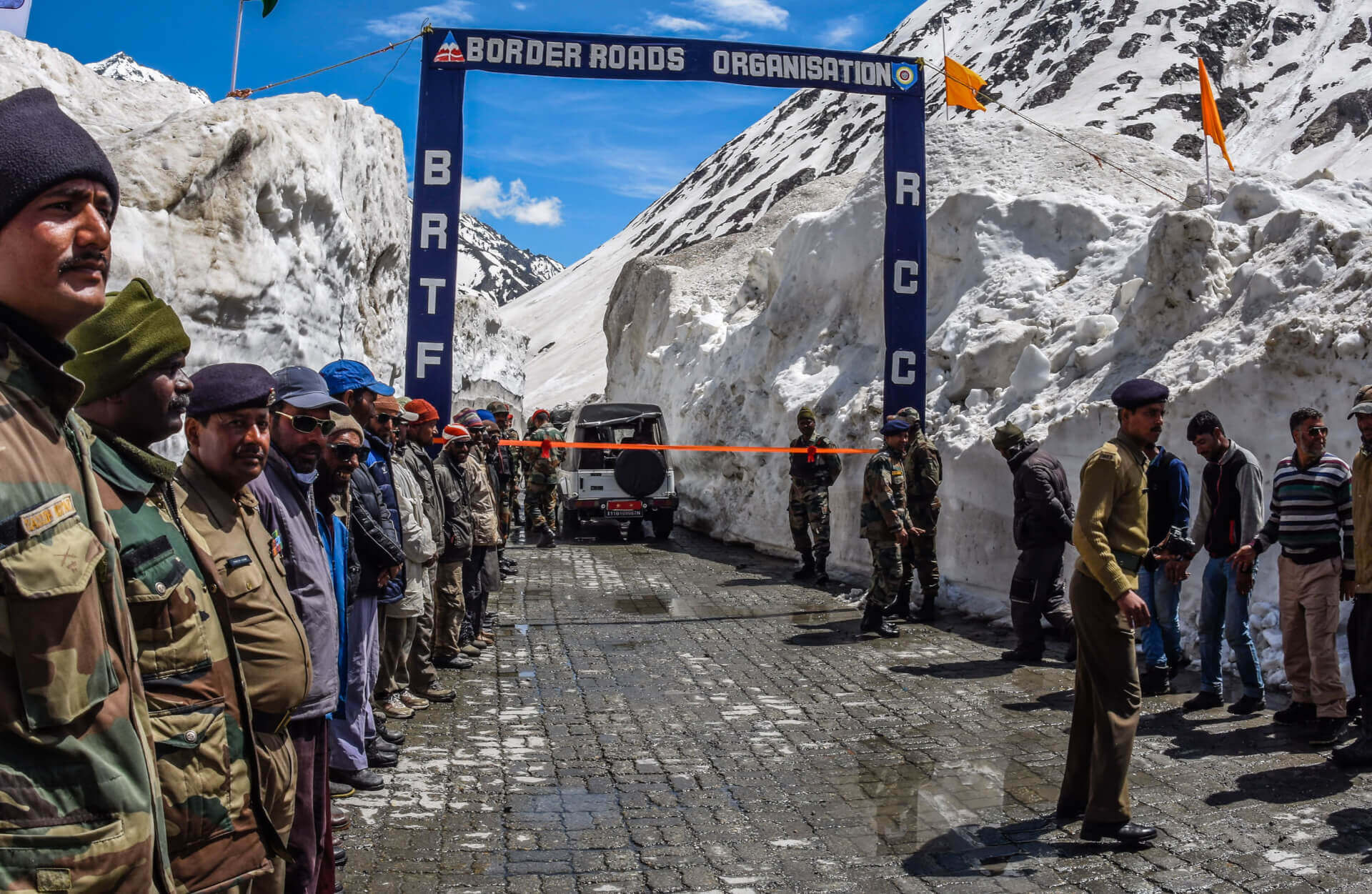During their 17th Commander Level Meeting on Tuesday, Indian and Chinese military leaders vowed to “work for the resolution of the remaining issues” in their territorial dispute along the Line of Actual Control (LAC)
A joint statement issued after the meeting at the Chushul-Moldo border point said they held an “open and constructive” discussion on the LAC and the Western Sector. At the ‘guidance’ offered by their respective countries’ leaders, the commanders pledge to work towards restoring “peace and tranquility” in the border region.
In this regard, the two neighbours agreed to “maintain the security and stability on the ground in the Western Sector,” “maintain dialogue through military and diplomatic channels” and “work out a mutually acceptable resolution of the remaining issues at the earliest.”
at least three large grazing areas near the village have been turned into “buffer zones” and graziers have lost access to 41 km of land. there are 19 grazing areas, all in Ladakh, that locals have not been able to access due to the ongoing crisis. 3/3
— Yusuf Unjhawala 🇮🇳 (@YusufDFI) December 23, 2022
Indian Ministry of External Affairs (MEA) spokesperson Arindam Bagchi remarked during a press briefing on Thursday that “there have been incidents or locations in the past where [the Indian Army has] stood firm” and emphasised that “our soldiers will stand firm to guard our frontiers”
The latest round of talks comes after Indian and Chinese troops clashed along the disputed border in Arunachal Pradesh earlier this month, leaving several injured on both sides.
Troops from both sides “immediately disengaged” after the clash, which occurred in Yangtse, 35 kilometres northeast of the Tawang sector in the northern state of Arunachal Pradesh.
Chinese soldiers reportedly encroached on an area near the LAC where both sides had agreed not to patrol. Indian Defence Minister Rajnath Singh in a parliamentary address on 13 December that the scuffle broke out due to China’s ‘transgressions.’
Another round of India-China military talks to end the 31-month troop standoffs in Ladakh fails, even as China's opening of a new front almost 2,000 kms away led to recent clashes on Tawang border. Oddly India again joins China in seeking to camouflage failure with positive spin. pic.twitter.com/bbbQuX1PNn
— Brahma Chellaney (@Chellaney) December 23, 2022
Indian media reports claimed that 20 Indian soldiers and “a much higher number on the Chinese side” sustained minor injuries. They also stated that around 300 PLA soldiers were involved in the face-off.
Referring to the latest incident, Qian Feng, the director of the research department at the National Strategy Institute at Tsinghua University, told Chinese state-owned media house Global Times on Thursday that the recent face-off in the LAC’s Eastern Sector will not affect negotiations on issues in the Western Sector.
“The incident was far less severe than the conflict in the Western Sector of the China-India border in 2020, and both China and India reacted quickly and held a meeting to bring the incident under control,” he said.
Meanwhile, a report by The Telegraph last week revealed that Indian and Chinese soldiers frequently engage in “violent hand-to-hand combat, often using clubs and other homemade melee weapons.”
“Face-offs with the People’s Liberation Army (PLA) have become a common feature along the border in Arunachal Pradesh, particularly in the Yangtse area,” a senior Indian Army officer told the newspaper, adding, “They have happened on average two or three times a month, recently, and the incursions have increased in frequency over the last two years.”
Union Minister @KirenRijiju at Yangtse area in #Tawang, Arunachal Pradesh where India thwarted China’s sinister plot of transgression. The area is fully secured now due to adequate deployment of brave jawans of Indian Army, he says. 🇮🇳 pic.twitter.com/U9rMsjnUv4
— Aditya Raj Kaul (@AdityaRajKaul) December 17, 2022
The source revealed that Indian troops are under strict orders “from the top” to maintain secrecy regarding its frequent clashes with the PLA in order to keep the Indian public from panicking.
After years of relative peace, the deadly Galwan Valley clash in June 2020, which killed 20 Indian soldiers and as many as 45 Chinese soldiers, reignited tensions between the two countries.
Since the incident, India and China have held 17 rounds of Senior Commander-level meetings, which have resulted in mutually agreed “no patrolling zones” and complete disengagement in the northern and southern banks of Pangong Tso, Gogra, and Galwan Valley.
In fact, the two sides began the disengagement process at Gogra Hot Springs (PP-15) on 8 September as per an agreement reached at the 16th commander-level meeting in July.
They also withdrew troops and took down temporary infrastructure set up along the LAC for the first time since the 2020 clash.
The two sides remain deadlocked in discussions on the Depsang Bulge in the Daulet Beg Oldi sector and the Charding Nullah Junction in the Demchok sector. As a result, they maintain around 60,000 troops along the LAC.
On Monday, Indian External Affairs Minister S. Jaishankar underscored that India will not let the People’s Liberation Army “unilaterally” alter the status quo along the LAC.

